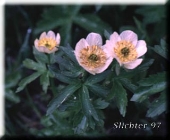Trace, No, I'm talking about the consistency of my results. I am burning fairly small amounts of wood, I'm going through it piece by piece afterward, and breaking up the actual biochar with my fingers, and setting the hard, solid black stuff aside. I call the hard stuff charcoal. I think it needs reburning to advance it to actual biochar, IMO. So, is it ALL really biochar, just because it's black all the way through?
People keep jumping from the word 'biochar' to the word 'charcoal' like both are the same. Is it really? It seems that if you're talking about biochar, stick to the word 'biochar'.
I am under the impression that biochar is the light, holey, black stuff that all the residue has burned off, that crushes easily. I thought the charcoal is the harder, more solid black stuff that takes more effort to crush, and it still contains the volatile residue.
Am I misunderstanding that ALL of it is really biochar as long as it's black???






